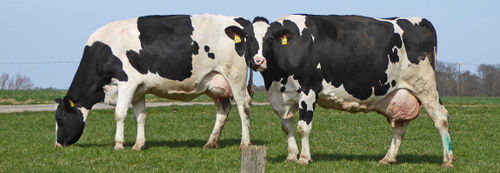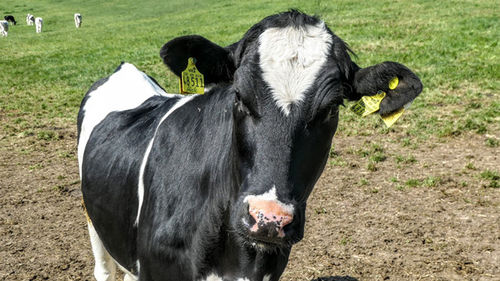Leather sustainability and traceability
Contents
What is meant by sustainability when it comes to leather?
Today, more and more customers are demanding sustainable production of the products they buy. Sustainability means many things. Leather is primarily about animal husbandry, animal transport, the slaughter method, leather production, the chemicals used, the employees involved in all processes and the environmental impact.
Tanners and importers or dealers of leather products are subject to strong pressure to adapt. The previously dominant and established chrome tanning is being questioned and leather as an animal product in general. Customers are demanding information and evidence of sustainability, and the used chemicals are becoming more and more regulated and controlled, and the choice of basic chemicals is becoming more and more limited. Small companies have little opportunity to master the change without service providers and other outside help.
In the meantime, a wide range of organizations and companies has formed to support the change: The Blue Angel, the Oeko-Tex Leather Standard, NATURLEDER IVN certified or the Sustainable Leather Foundation SLF along with many other providers. Certificates are offered that are checked by means of audits and examine overall aspects or partial aspects of sustainability in the company.
The carbon footprint of leather
The production of leather creates a carbon footprint. Modern tanneries try to coordinate all their processes in such a way that the smallest possible carbon footprint is left behind. Chemicals for tanning and finishing chemicals are bought more consciously and further developed by the manufacturing industry. Wastewater is saved as much as possible and clarified in a timely manner, and residues are recycled as far as possible. Energy is saved and, where possible, self-generated. Modern tanneries are in a transition process.
Some customers associate leather negatively because it comes from animals and reject animal husbandry and meat consumption, which produces the raw material for leather. In addition, customers have concerns that leather manufacturing could be environmentally harmful, which is true in less developed countries but does not reflect the reality of well-monitored and careful leather manufacturing in developed countries.
Some of the downstream industries argue that the carbon footprint of agriculture must be attributed to the dairy and meat industries because the animals are not kept for leather production. The downstream industry (tannery, leather processors, trade in leather objects) only recycles the waste product "rawhide" from animal husbandry for the production of dairy products and meat products and thus has a positive effect, because a residual product that is otherwise considered waste is recycled into leather and thus only the CO2 emissions can be attributed to the leather industry from the time the rawhide is removed in the slaughterhouse. If leather were not made, waste skins would generate an estimated 5 million tons of CO2 per year. But that is not a realistic view, because otherwise raw hides would be used elsewhere.
Some argue that the CO2 share of animal husbandry should be allocated proportionally to the leather industry, which according to the idea corresponds to the C02 allocation “cradle-to-grave-aoproach”, i.e. including all input materials. Another argument in favor of allocation is the tanner's free choice of which raw hides to buy and where. If the tanner tends to buy hides from cattle with a favorable CO2 allocation, then he is contributing to the reduction of C02. Since the CO2 consumption is higher for cattle with a longer lifespan, buying raw hides in Europe would be more advantageous because the animals there live shorter lives (less resource consumption) and have larger hides (less CO2 emissions per area), which reduces the CO2 Emissions from animal husbandry are then reduced compared to Asia or Africa. However, this would in turn promote a shorter lifespan for the animals and, as a result, lead to more animal killings. This may have a positive effect on the CO2 allocation for leather, but it is not a desirable additional effect for animals and animal-loving consumers. In the worst case, this could result in the tanner buying the skins of young slaughtered animals from a farm that has a higher CO2 emission per animal than a farm with optimized CO2 management, but with animals that live longer and therefore allocated more C02 receives.
Customers who reject leather buy substitute products. However, a real alternative to the advantages of leather does not yet exist. The substitute products for leather shoes, clothing, bags, car upholstery covers, or furniture upholstery offered on the markets are almost exclusively based on artificial leather variants made from mineral oil. The CO2 footprint of the production of these alternatives is higher than that of leather production, the durability of these products is significantly lower than of high-quality leather and afterwards it leaves microplastic-generating waste in contrast to leather, which is biodegradable. A longer shelf life of products delays new production and thus leaves a lower carbon footprint than short-lived products, as long as the CO2 generation of the production of the long-lived product is not disproportionately higher, which is not the case with leather compared to artificial leather.
Leather traceability
In the context of discussions about the way animals are kept and leather is produced, the traceability model of leather is discussed in order to be able to prove sustainability.
The idea behind it is a complete trace from the leather back to the animal whose skin was tanned for the leather. This means that the origin of the animal, the husbandry of the animal, the animal transport, the slaughter method, the tanning and the processing into a leather object are documented in a completely transparent manner so that the consumer can ensure that with the purchase of his leather object he is supporting animal welfare-oriented animal husbandry, an environmentally friendly tanning process and socially acceptable working conditions in the tannery, the leather processor and in retail.
Although there are legal regulations for animal husbandry, tanning and the employees in the chain, leather and/or leather objects often come from countries where the desired minimum standards are not observed or are not monitored at all. Traceability therefore requires information that goes beyond the legal national and international regulations.
For the traceability of the animals, barcodes, plastic markings, or leather skin stamps are discussed and even DNA recordings are considered to ensure secure traceability.
Ear tag of plastic for marking cattle.
So far, few leather processors (e.g. Identity Leder) have taken up the issue of traceability, as it involves a great deal of effort and expense and animal keepers and tanners are not yet sufficiently prepared to meet the necessary conditions.
A traceability system already exists in the leather industry. The Washington Convention on the Protection of Animals (CITES - Convention on International Trade in Endangered Species of wild fauna and flora) protects endangered animal species and leather from protected animals that are bred on farms, for example, require a CITES certificate. Experiences from this area serve as an aid for the implementation of the traceability of all leather.
According to a survey of European tanners, many are able to identify the country of origin of the processed rawhides, some also the slaughterhouse, but when it comes to the origin of the animals, the necessary information for full traceability is often missing. There are also understandable concerns on the part of the tanneries about making their sources of supply completely transparent to their competitors, because they could be informed by the end customer information.
When it comes to supply chain traceability, it's not just about the leather, it's also about the chemicals used in a tannery. With these raw materials, too, the pressure is increasing to find out complete documentation of the origin of the goods in order to operate completely sustainably.
In order to promote and standardize the traceability of leather, the European leather association Cotance has launched the "Leather Traceability Cluster" initiative. The Leather Working Group (LWG), the Sustainable Leather Foundation (SLF) and the Institute of Quality Certification for the Leather Sector (ICEC) have joined this initiative. The Oeko-Tex Leather Standard and Textile Exchange have decided to become part of this initiative.
Current status of leather and its sustainability, carbon footprint and traceability
The leather industry is still in its infancy on many issues related to overall sustainability, carbon footprint and traceability, but a lot of effort is being put in by most stakeholders to make more progress on these issues, to best serve end users and to inform.
Additional information
- Leather production
- The biodegradability of leather
- Environmental protection
- The Blue Angel
- Oeko-Tex Leather Standard
- Sustainable Leather Foundation SLF
- NATURLEDER IVN certified
- Seal of approval for leather
- Leather quality
- Leather waste











 a kotori web solution
a kotori web solution